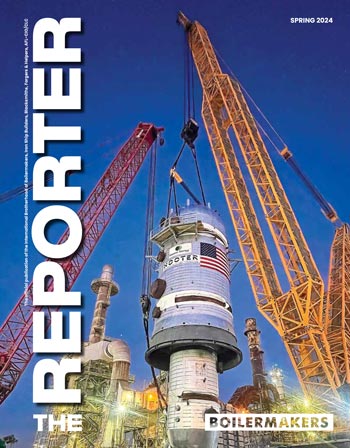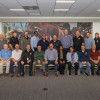If you wanted to join the Boilermakers union in 1893, you had to be a “white, freeborn male, citizen of some civilized country.” The language of the organization’s constitution at the time was clear—and it wasn’t unusual.
To say that times have changed is, thankfully, an understatement. Today, men and women from all races, religions and manner of makeup are members of the International Brotherhood of Boilermakers, Iron Ship Builders, Blacksmiths, Forgers and Helpers, AFL-CIO/CLC.
As with many industrial and manufacturing trades, World War II was a major catalyst to officially opening the Boilermakers’ membership door to women—and shipbuilding was key. Before World War II, there were about 3,000 union Boilermakers working in California’s Bay Area. By 1943, there were more than 150,000 in the Bay Area and over 300,000 on the West Coast in total. Around 20% of them were Rosies.
Though women had unofficially affiliated with the union for years, it was the growing number of women working in shipyards and other Boilermaker industries that finally pushed the issue of admitting women members into a formal amendment proposal. In 1942, the Boilermakers’ Executive Council passed the amendment, which was approved in a resolution by local lodge vote.
According to the Boilermakers’ history book Grace Under Pressure: “Local lodges immediately began admitting women. In fact, evidence suggests that some lodges may have been admitting women prior to the resolution of 1942, despite the constitutional ban.”
There were, of course, still many challenges.
“Women and people of color faced a hostile work environment and were victims of discrimination and prejudice,” said Western States IVP J. Tom Baca during a fundraiser for the Rosie the Riveter Trust in 2019.
“Boilermakers resisted change as much as any other union; and despite the Rosies being a big factor in the U.S. winning World War II, as soon as the men returned, women were laid off.”
The Boilermakers union—and Western States Section in particular—is a supporter of the Rosie the Riveter Trust, which is the official nonprofit partner of the Rosie the Riveter/World War II Home Front National Historical Park in Richmond, California. A museum at the park, which is on the grounds of the former Kaiser Company shipyards, tells the stories of the tradeswomen who helped build nearly 750 WWII ships at the site.
Many Boilermakers are by now familiar with the story of Betty Reid Soskin, who was a file clerk for Boilermakers Local A-36, an all-Black auxiliary lodge. After learning about and later meeting Soskin, the Boilermakers union commissioned a film to capture and share her story as a woman of color who was relegated to an auxiliary local.
“Where we are now is a far cry from where we were in 1942,” Soskin says in the film. “But I think if we could go back and revisit those eras, the lessons are there.”
The Boilermakers union acknowledged its unacceptable treatment of Soskin and others and offered an apology. Soskin, who noted she had forgiven the Boilermakers long ago, went on to work for decades as a park ranger at the Rosie Museum and retired shortly after her 100th birthday in 2021. She remains an icon to tradeswomen and to the union’s history.
“The Boilermakers have never forgotten our history, thanks to great women leaders like Betty Soskin,” Baca said. “That’s why we want to help preserve our history—the good and the bad.”
Read more about Betty Reid Soskin: https://www.nps.gov/rori/learn/historyculture/betty-reid-soskin.htm
Watch the video about Betty Reid Soskin and the WWII Rosies: https://vimeo.com/203342642







